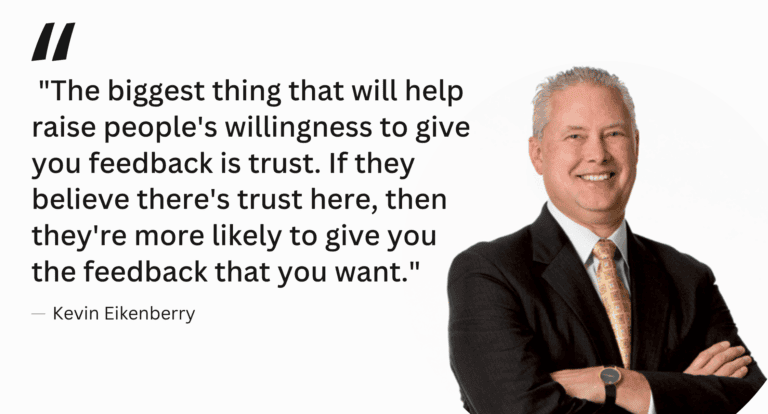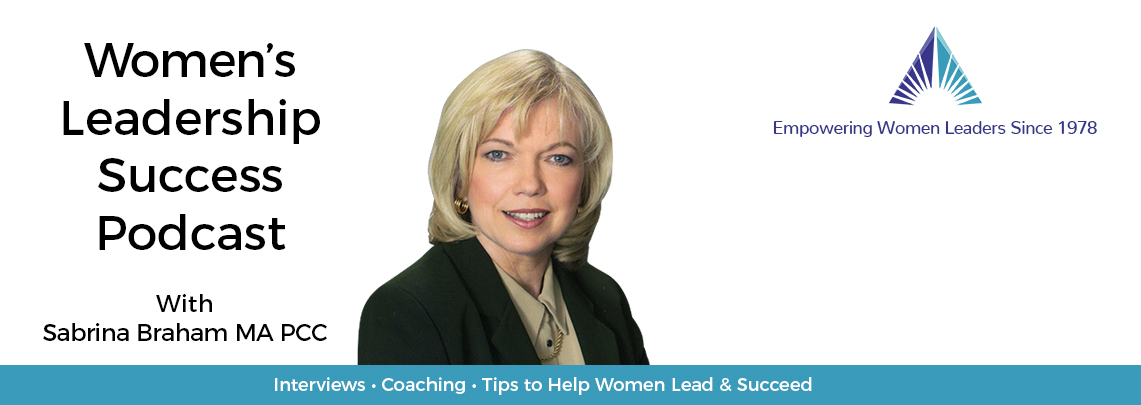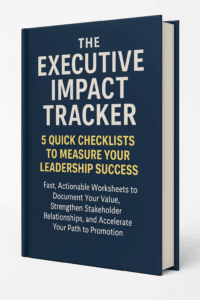Podcast: Play in new window | Download
Subscribe: Apple Podcasts | Spotify | Android | Pandora | iHeartRadio | Blubrry | TuneIn | Deezer | RSS
In this second part of our interview with Kevin Eikenberry, author of “Flexible Leadership,” we explore how women leaders can implement flexible leadership strategies to navigate complex situations, overcome challenges, and drive organizational success.
Why Implementing Flexible Leadership Strategies Matters for Women Leaders
While understanding the flexible leadership mindset is essential, the real value comes from implementation. For women leaders navigating today’s complex business environment, implementing flexible leadership strategies creates a powerful advantage in overcoming traditional barriers.
According to recent research from McKinsey, companies with women in executive positions are 30% more likely to outperform their competitors, highlighting the business impact when women leaders successfully implement adaptive approaches.
Mastering Leadership Flexors: Key Strategies for Women Leaders
At the core of implementing flexible leadership strategies is what Eikenberry calls “flexors” – paired leadership approaches that might initially seem contradictory but are actually complementary dimensions of effective leadership:
Results vs. People Focus for Women Leaders
Rather than permanently choosing one approach, women leaders who implement flexible leadership strategies consciously shift their emphasis depending on what the situation requires:
“This isn’t binary,” explains Eikenberry. “The right answer is how to lean in the direction of each. During crunch time before a deadline, I might focus more on results, but afterward shift toward supporting my people’s needs.”
Decisive vs. Collaborative Decision-Making Strategies
Women leaders can adjust their decision-making approach based on:
- Urgency of the situation
- Expertise required for quality decisions
- Need for buy-in during implementation
- Development requirements of team members
Directive vs. Coaching Communication Strategies
Effective women leaders consciously choose their communication approach:
- When clear direction is needed versus when development is the priority
- How much structure to provide versus autonomy to encourage
- When to speak with authority versus when to facilitate dialogue
Implementing flexible leadership strategies means consciously selecting the appropriate approach rather than defaulting to habit or personal preference.
Practical Implementation Strategies for Women Leaders
Women leaders can immediately begin implementing flexible leadership strategies through these practical applications:
- Context-Based Decision Framework for Women Leaders
- Assess whether the situation is clear, complicated, complex, or chaotic
- Consider what specific outcomes are required in this particular context
- Determine whether to decide independently, seek input, or fully delegate
- Match your leadership approach to the urgency, complexity, and expertise needed
- Adaptive Communication Strategies for Women Leaders
- Develop multiple ways to deliver the same message for different stakeholders
- Adjust your communication style based on audience and circumstance
- Know when directness will be more effective than collaboration
- Create communication approaches that overcome potential gender bias
Research shows that 36% of women leaders report being interrupted in meetings, compared to just 15% of men in similar positions. Implementing flexible communication strategies helps women leaders maintain their effectiveness despite these challenges.
- Strategic Feedback Systems for Women Leaders
Women leaders who implement flexible leadership strategies create robust feedback mechanisms:
- Structure psychological safety for honest communication
- Ask specific questions rather than general ones (“How could I improve my listening in today’s meeting?” versus “How am I doing?”)
- Build trust through consistency between words and actions
- Recognize that positional power may inhibit candid responses
As Eikenberry notes:

Implementing Change Leadership Strategies for Women Leaders
Flexible leadership strategies are particularly valuable during times of change, an area where women leaders often excel:
- Reading the Emotional Landscape
Women leaders can leverage their typically strong emotional intelligence to:
- Recognize emotional responses to change initiatives
- Adjust communication based on observed reactions
- Address concerns before they become resistance
- Building Strategic Coalitions
Successful implementation of change initiatives requires:
- Creating networks of relationships to support implementation
- Developing champions across organizational levels
- Connecting change initiatives to meaningful purpose
- Adaptive Implementation Strategies
Women leaders implementing flexible leadership strategies:
- Start with small experiments to gather information
- Adjust approaches based on real-time feedback
- Maintain focus on core outcomes while adapting methods
According to Deloitte’s 2025 Human Capital Trends research, organizations need a new approach to select, plan, and achieve value from their workforce investments. Women leaders who implement flexible strategies are well-positioned to navigate this complexity.
Breaking Implementation Barriers for Women Leaders
One of the most powerful insights from Eikenberry involves the distinction between identity and behavior, critical for implementing flexible leadership strategies:
“There’s a difference between who we are and what we do.”
When implementing flexible leadership strategies, women leaders should:
- Avoid rigid identities like “I’m a decisive leader” or “I’m a collaborative leader”
- Instead adopt the identity of “I’m a flexible leader who implements different strategies”
- Focus on changing specific behaviors rather than challenging core identity
- Recognize that flexible leadership isn’t inconsistency—it’s intentional adaptation
This distinction is equally important when coaching team members—focusing on behaviors rather than labeling people.
Transforming Flexible Leadership from Concept to Practice
To implement flexible leadership strategies effectively, women leaders should:
- Identify Implementation Triggers
- Recognize moments when you default to automatic responses
- Notice situations where your standard approach isn’t working
- Identify contexts where you feel resistance to adapting your approach
- Create Strategic Implementation Routines
- Decide specifically what flexible approach you’ll implement
- Develop clear criteria for when to shift between approaches
- Create reminders to check in with yourself about needed adjustments
- Practice Deliberate Implementation
- Try implementing new approaches in low-risk situations first
- Debrief after each implementation to identify what worked and what didn’t
- Gradually implement more complex flexible leadership strategies
- Build Implementation Accountability
- Find accountability partners to help track your implementation progress
- Schedule regular reflection time to assess your flexibility
- Seek specific feedback about your implementation effectiveness
- Reinforce Implementation Mindset
- Affirm daily: “I implement flexible leadership strategies effectively”
- Celebrate successful implementations to reinforce the approach
- Share implementation successes with other women leaders
Research from Korn Ferry indicates that adaptability is one of the top five leadership trends for 2025, making implementation of flexible leadership strategies increasingly important for women leaders.
Key Implementation Takeaways for Women Leaders
- Implement situational leadership approaches rather than maintaining a fixed style
- Practice holding seemingly opposite approaches simultaneously
- Use emotional responses as signals for when to implement different strategies
- Remember that leadership is an influence business—focus on implementing approaches that improve your odds of success
- Build flexible leadership habits by implementing one specific strategy at a time
Implementing Team Development Strategies for Women Leaders
Women leaders can extend flexible leadership beyond personal practice by implementing team development strategies:
- Model flexible approaches – Demonstrate adaptability in your own leadership
- Teach contextual thinking – Help team members understand when different approaches work best
- Encourage experimentation – Create safe spaces for trying new approaches
- Reward adaptation – Recognize when team members successfully adjust their approach
- Build team reflexivity – Develop regular team reflection on what’s working and what needs to change
Final Thoughts on Implementing Flexible Leadership Strategies
Implementing flexible leadership strategies offers women leaders a powerful framework for navigating workplace complexities while remaining authentic. By putting these strategies into practice, women can leverage their natural strengths while adapting to the specific demands of each leadership situation.
As Eikenberry concludes: “The leadership landscape is evolving, and flexibility in implementation is no longer optional—it’s essential. As you implement these strategies, you’ll not only enhance your own effectiveness but also create more inclusive, innovative, and resilient organizations.”
Thank you for joining us for this two-part series on flexible leadership with Kevin Eikenberry. Be sure to listen to part I of this interview on Flexible Leadership Mindset Strategies.
Connect with Kevin at kevineikenberry.com to access his newsletter and additional resources for implementing flexible leadership strategies.
Take Your Leadership Implementation to the Next Level!
Ready to implement these flexible leadership strategies? Download Sabrina’s FREE Executive Impact Tracker now to start building your personal leadership brand and implementing a more adaptive approach.
This comprehensive resource includes practical implementation tools for women leaders navigating difficult conversations, strategies for building visibility, and action planning worksheets to implement flexible leadership approaches.
Related posts:
- Flexible Leadership Mindset for Women Executives: Mastering Adaptability in Today’s Business World
- Self-Leadership Strategies for Impact and Influence
- Female Leadership Equality | Female Inclusive Leadership and Allyship Strategies to Build Diversity and Profits | Julie Kratz and Sabrina Braham MA MFT PCC for Women’s Leadership Success Podcast #123
- Career Advancement Strategies for Women in Management: Expert Leadership Insights
- Microaggressions Workplace Strategies: Turning Awareness into Action & Respect










Leave A Comment